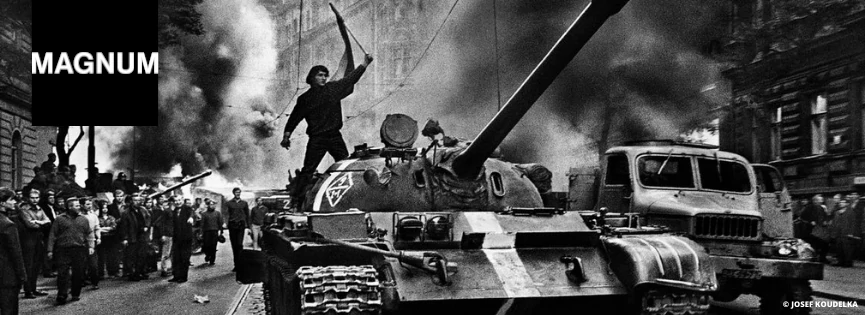Main content
Magnum Photos 2024 Princess of Asturias Award for Concord

Magnum Photos was founded in 1947 by four pioneering photographers: Robert Capa, Henri Cartier-Bresson, George Rodger and David “Chim” Seymour. Driven by their vision to create a photojournalism agency where photographers retained control and freedom over their work, they gave birth to a unique structure — the first cooperative-owned agency run by its photographers.
As owners of their copyrights, photographers could decide which stories to cover and to publish, and they were able to sell the images to any media in the world — giving them the means to work on projects that inspired them, even without an assignment. Spanish photographer Cristina de Middel has been the agency’s president since last year. It has its main offices in Paris, New York and London, as well as a network of contributing photographers.
Considered one of the most prestigious international photographic agencies in the world, its four founding partners and followers of the German pioneers of photojournalism, Robert Capa, Henri Cartier-Bresson, George Rodger and David Seymour, have gone down in history as the fathers of this discipline. The cooperative’s list of past and present members includes some of the most important photojournalists, whose images have appeared in newspapers such as The New York Times, Le Monde, Le Figaro, The Sunday Times, The Guardian and Corriere della Sera and magazines such as Paris Match, National Geographic, Fortune, Life y Geo. Most of them have had solo exhibitions in institutions around the world, such as the National Library of Paris and the Museum of Modern Art in New York (MoMA), among others. Boasting over a million photos, the agency’s archives include: the only existing photos of the Normandy landings, the work of Robert Capa; snapshots of Malcolm X’s speeches, captured by Eve Arnold; and images of Fidel Castro’s entry into Havana in 1959, taken by Burt Glinn.
In 2007, the agency created the Magnum Foundation, aimed at providing fellowships to photographers and preserving its historical archive. It also began to work with The Global Fund to Fight AIDS, Tuberculosis and Malaria, with which an international team of photographers travelled to nine countries to document the effects of antiretroviral treatments on AIDS patients. The result was “Access to Life”, a traveling exhibition that opened in 2008 in Washington and could be seen in Madrid, Oslo, Rome and Oakland. While retaining the copyright, Magnum sold its collection of printed photographs in 2010 to computer magnate Michael Dell, who later bequeathed the archive to the Harry Ransom Center at the University of Texas for its preservation and cataloguing. The agency is also committed to mentoring independent photojournalists and visual storytellers, for whom it organizes educational activities. In the exhibitions in which it regularly participates or organizes, the agency shows special interest in addressing social issues such as sustainability, offsetting the carbon footprint and gender equality. In 2022, the year in which it celebrated its 75th anniversary, it focused on the armed conflict in Ukraine via initiatives such as the launch of a sale of photographs about armed conflicts, the profits of which were destined to the International Committee of the Red Cross (2012 Prince of Asturias Award for International Cooperation) to support the protection of life and human dignity in Ukraine and other places affected by war.
Magnum photographers have received awards such as the World Press Photo of the Year (Netherlands), the W. Eugene Smith Award for Humanistic Photography ( USA) and the Foreign Press Club Award (USA). Magnum Photos received the 2020 Leadership Award from the International Photography Hall of Fame and Museum (USA). It also awards the Inge Morath Prize.
End of main content
